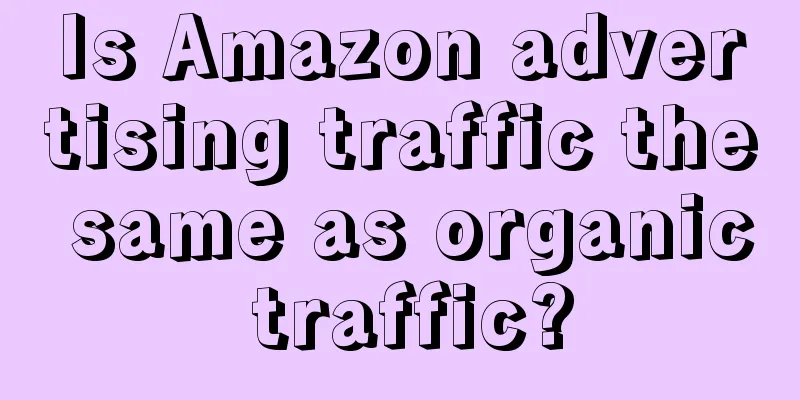In-depth content is the starting point of brand marketing

At the end of 2016, Luo Zhenyu's four-hour New Year's Eve speech live broadcast had an average viewing time of over 68 minutes per person, setting a historical record. In this speech, he first proposed the concept of "time battlefield". Luo Zhenyu said that the total national time that can be mined on the Internet is 182.5 billion hours, and time is becoming a cruel commercial battlefield. In the future, there will be two businesses that will be particularly valuable: first, the business of helping others save time; second, the business of helping others waste their time on beautiful things. This year, A.me, a music creative short video social software incubated by Toutiao, was launched and quickly became a must-have for people of all ages. Later, A.me was renamed Douyin and became the place where the nation spends the most time. Tik Tok, through fragmented short video content, helps others waste time on beautiful things. But how can we help others save time? Brand strategy blogger @杨不坏 mentioned that if fragmented content is used to “Kill time”, then in-depth content is used to “Save time”. He said that at a time when people are surrounded by fragmented content, the public still needs in-depth content, because the value brought by in-depth content is actually that it allows the audience to gain some time rather than waste it. Of course, brands also need in-depth content. In-depth content provides complete thinking logic and is the content that can truly shape the brand mind. 1. Anti-funnel logic of deep contentWhat is deep content? In-depth content should be the opposite of pursuing eye-catching effects, emotional expressions, and "nipple pleasure", and should be able to bring deep learning and cognitive growth to the audience. It should either have information gaps, or have complete logic to explain its novel ideas, or propose a methodology. It is best to include the what, how, and why of the Golden Circle rule. How does such content play a role in brand marketing? Over the past period of time, everyone has been promoting fragmented content, which actually seems to hope to attract more people to watch with some eye-catching and emotional things. This is based on traffic considerations. But this traffic logic is funnel-shaped. Your title is exposed to 400,000 people, but only 20,000 people click on it, and only 6,000 people read it to the end. The logic of deep content is different. First, under the current AI marketing strategy of intelligent serialization, most of the brand’s content does not require exposure or conversion from natural traffic. Once you have determined your strategic target audience and polished your in-depth content, you can deliver your content accurately and adjust the delivery to each tag audience in real time based on the conversion effect. Under this logic, the content itself must stand the test. Second, although in-depth content has a disadvantage in terms of coverage, it is actually an advantage in screening target audiences. People who are really willing to spend time reading in-depth content and learn deeply to gain cognitive increments are closer to koc and kol. Using the public opinion pyramid model to describe it, it may not reach the general public, but it can influence some elites. When this group of people are inspired, some of them will share the content with others, thus splitting into other interested groups. 2. From Strategic Population to Channel MatrixWhen creating content, you should first think about who will see it. Only when you know who will see it, you will understand which channel to release the content. We need to adjust our content because of different audiences and channels. In the past, this point was mostly just talk, but now we really need to understand it clearly. Today's channels have become isolated, and it is difficult to translate brand value between media using a single language. In the past, brand content dissemination was carried out in a centralized media environment, so that the issues that brands had to think about were the three points of HBG's large-scale penetration theory: visible, conceivable, and purchasable. But it doesn’t work now. Using Douyin’s content to spread on Xiaohongshu, or using Bilibili’s content to spread on Kuaishou, basically doesn’t work. At present, our audience is not users, but machines. Each platform has invisible algorithmic rules. If your content does not cater to the platform algorithm, no matter how good the content is, it will not be released by the machine, let alone recommended to more users. In 2023, I helped a new wine brand create a piece of content. With 0 fans, the content was displayed more than 600,000 times on Toutiao. It’s clear that brands that understand algorithms can save a ton of communication budget. From a business perspective, we can roughly divide strategic groups into: investors, franchisees/distributors/agents, and consumers. Of course, most marketing cases involve scenario segmentation or refined label segmentation at the consumer level, which requires discussions at a smaller granularity. Based on the above classification, I have always advocated that the distribution channels of brand content, especially public relations content, should be divided into the following four categories:
Of course, we cannot ignore WeChat public accounts in this process. Well-known accounts in the industry that I follow, such as Yuanchuan Matrix, Wandian Matrix, and even dozens of accounts under NetEase, have done a great job in in-depth content such as pictures and texts. 3. From clear proposition to content adaptationSince I have been shallowly engaged in graphic and text content for the past 9 years, I can use this section as a sample. The first thing is to know what you want to convey? In 1983, the Lisa computer, Jobs' last project before leaving Apple, was launched. In order to promote this product, Jobs booked 9 pages of the New York Times to explain the features of this computer. Unfortunately, few people were willing to read these, which ultimately led to poor sales of this computer. More than 10 years later, when Jobs returned to Apple, the first thing he did was to take up another 9-page spread in the New York Times. But this time, there was no product information, but only one word: "Think Different". Even billboards across the United States bear this phrase. Apparently, Jobs filtered out its message to make the brand value proposition clearer. In the following years, all the content dissemination of Apple in all dimensions revolved around this sentence. The second is how to layout your content. When it comes to graphic content, I generally recommend six types of content for brands: Second, leadership formation: Third, creating explosive products: Fourth, hotspot blocking: Fifth, event amplification: Sixth, create a trend with topics: For example, during the Shandong consumer brand research in 2023, I came into contact with U+ Furniture. Since its inception, the in-depth content of U+ Furniture has actually always focused on the explanation of product ideas, with an artistic style. After I discovered this during the interview, I started to sort out new content for U+. Finally, I used the PMF model to sort out the feasibility of the brand from a business perspective. With only 20 stores in 15 years, it has become the leading brand of original design furniture in China.For example, starting in 2019, an investment promotion agency in Tianjin found me through Zhihu and expressed its desire for content dissemination. As it is such a young organization, its employees are also relatively young. In the investment promotion industry, it is particularly important to gain the customer's first impression and trust. To this end, I proposed to focus on leadership development and interviewed the heads of more than 10 business lines of the company, including a branch general manager born in the 1990s and a director of a research institute who came from another field. Through interviews with these people and writing of their profiles, firstly, the capabilities of every young person in the company are reflected; secondly, the company's internal management, working conditions, and attitude towards customers are indirectly reflected. At present, this organization has a certain reputation throughout the country. Several young managers I interviewed now often give lectures and exchanges for governments and enterprise parks in many places. At a time when the entire Internet is flooded with redundant and fragmented content, I believe that in-depth content will be the driving force behind the next wave of brand fission. Only deeper content and more comprehensive strategies can create a more powerful brand. Author: Huang Xiaojun; Official Account: Jingyan Brand Lab (ID: JingyanLab) |
<<: Poe AI: The future of building creator infrastructure
Recommend
How to cancel Amazon Global Selling? How to close it?
Among cross-border e-commerce platforms, Amazon an...
How can I remove products sold by Shopee? How can I remove products from the shelves?
Merchants who open stores on Shopee will get some ...
If you don’t understand strength and weakness, you won’t understand the public opinion field
In the public opinion field of social media, the s...
What is an Amazon Associate Account? What are the advantages?
Many friends are doing Amazon now. When doing Amaz...
What are the consequences of Lazada’s incorrect pricing? What should I do if Lazada has incorrect pricing?
No matter what platform you open a store on, merch...
Which cross-border e-commerce platforms allow individuals to open stores? Cross-border e-commerce platform recommendations
On cross-border e-commerce platforms, many stores ...
A practical guide to analyzing Xiaohongshu’s competitive products!
On the fiercely competitive Xiaohongshu platform, ...
Do individual sellers make money on eBay? How do they make money?
There are many cross-border e-commerce companies n...
The wet market is the most underestimated traffic source!
Many people have always believed that only new pro...
Why did I give up my Amazon business after only 3 months? How long does it take to make a profit on Amazon?
If you want to do cross-border e-commerce, Amazon ...
What problems can “closed-loop thinking” solve in corporate marketing?
The article revolves around the four words "c...
Case analysis: Coca-Cola’s brand naming, slogan, and brand story
Coca-Cola is currently a popular brand and beverag...
How does Shopee refund the price difference to customers? What should I do if the customer asks for a refund of the price difference?
After some Shopee customers bought a certain produ...
Is it better to make short videos than to place advertisements? The data tells you the answer!
In the wave of digital marketing, which one is bet...
Why did Rolex, McDonald's, and Gatorade sign Zheng Qinwen in the early stages, but their subsequent marketing performance was mediocre?
The Olympics are the focus of everyone's atten...









